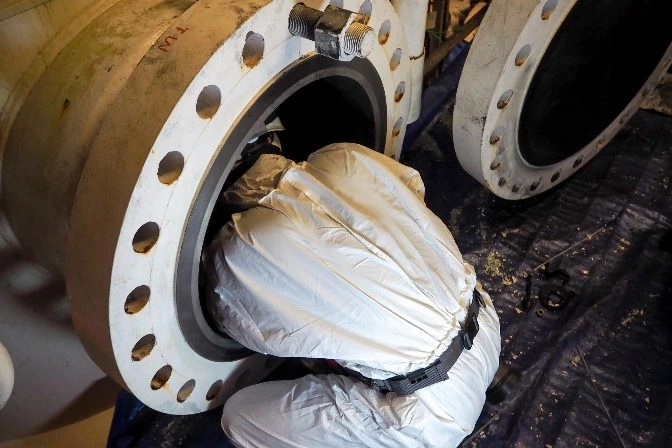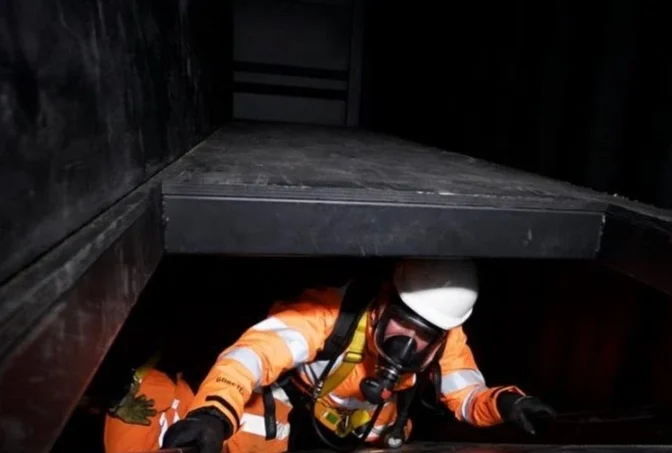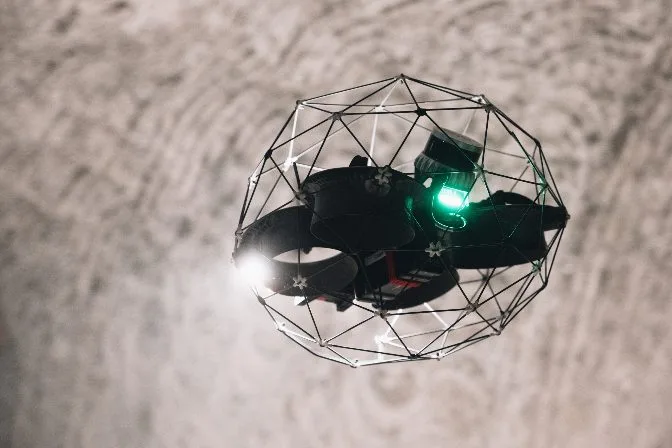Confined space equipment refers to any tool, system, or device that helps protect, assist, or rescue workers operating in enclosed or restricted areas. This can range from basic items like helmets and radios to advanced tools such as gas detectors, ventilation systems, and retrieval gear. These devices are essential for ensuring the safety of individuals working in potentially hazardous environments. In essence, if a piece of equipment contributes to the safety and efficiency of a worker inside a confined space, it qualifies as confined space equipment. This type of equipment is widely used across various industries, including oil and gas, mining, construction, power generation, wastewater treatment, and more. In this guide, we'll explore what constitutes a confined space, the risks involved, and the different types of equipment used globally to ensure safe operations. A confined space is typically an area that is not designed for continuous human occupancy but is large enough for a person to enter and perform specific tasks. Common examples include air ducts, manholes, tanks, tunnels, pipelines, silos, and storage containers. According to OSHA, a space is classified as a confined space if it meets three criteria: limited entry and exit points, not intended for regular human use, and large enough for a person to enter and work. Not all enclosed spaces meet these conditions, so it's important to distinguish between a confined space and other hazardous environments. This guide will focus on the dangers associated with confined spaces and the equipment designed to mitigate those risks. [For a deeper understanding of industrial work in enclosed areas and how to identify and manage confined spaces in your workplace, check out this helpful Flyability guide.] Working in confined spaces presents a wide array of hazards, from atmospheric risks to physical dangers. Confined space equipment plays a critical role in minimizing these risks and protecting workers. Some of the most common hazards include: Confined space equipment is designed to address the many risks associated with working in these environments. It must protect entry points, prevent unauthorized access, provide ventilation, and ensure safe access and egress. Before entering a confined space, especially one that poses additional hazards, a permit is often required. This ensures that the environment is safe and that all necessary precautions are taken. The permit typically outlines the purpose of entry, authorized personnel, communication methods, and hazard elimination procedures. Spaces that contain atmospheric, chemical, or physical hazards require a confined space permit. This document is crucial for maintaining safety and preventing accidents. Some confined spaces do not require a permit, such as crawl spaces or ventilated tunnels. However, even in these cases, safety measures should still be followed. Confined space equipment includes a wide variety of tools and systems. Here are some of the most commonly used categories: Effective communication between workers inside and outside the space is essential. This includes radios, headsets, and communication kits that allow for clear and reliable messaging in challenging environments. These systems help workers safely enter and exit confined spaces and are also used for emergency rescue operations. Examples include harnesses, hoists, tripods, and pulleys. Emergency medical supplies such as first aid kits, breathing apparatuses, and stretchers are vital for responding to injuries or health emergencies in confined spaces. Gas detectors and environmental monitors are essential for identifying and managing atmospheric hazards. They help ensure that the air quality is safe for workers. Basic PPE like hard hats, gloves, and safety glasses are standard in most confined space operations. Additional protective gear may be required depending on the environment. Clear signage and permits are important for communicating hazards and controlling access to confined spaces. Signs such as “Enter By Permit Only†are commonly used. Ventilation tools like blowers and fans help remove contaminants and maintain safe air quality within confined spaces. Robots, drones, and camera-on-a-stick devices are increasingly used to inspect confined spaces without requiring human entry. These tools improve safety and efficiency. Drones have become a game-changer in confined space operations. They can navigate areas where humans cannot, collect data quickly, and reduce exposure to hazardous conditions. Unlike humans, drones are unaffected by oxygen levels, toxins, or physical obstructions. This makes them ideal for inspections and monitoring in dangerous environments. With advancements in technology and decreasing costs, drones are becoming an essential part of confined space equipment. They offer safer, faster, and more efficient solutions for inspections and data collection. While traditional equipment remains important, the future of confined space work is likely to be dominated by drones and other unmanned systems. As their capabilities grow, they will continue to transform how we approach confined space safety and operations. Lathe Machining,Cnc Lathe For Sale,Cnc Lathe Machine,Cnc Turning Ningbo Leyan Machinery Technology Co., Ltd , https://www.cncleyan.comConfined Space Equipment: A Comprehensive Guide

What Is a Confined Space?
Dangers of Confined Space Entry

Requirements for Confined Space Entry
Permit-Required Confined Spaces
Non-Permit Confined Spaces
Types of Confined Space Equipment
Communication Equipment
Descent, Rescue, and Retrieval Systems
Medical Equipment
Meters and Monitors
PPE (Personal Protective Equipment)
Signage and Permits
Ventilation Equipment
Data Collection and Inspection Tools
Drones as Confined Space Equipment
 Elios 3 drone used for confined space inspections
Elios 3 drone used for confined space inspections